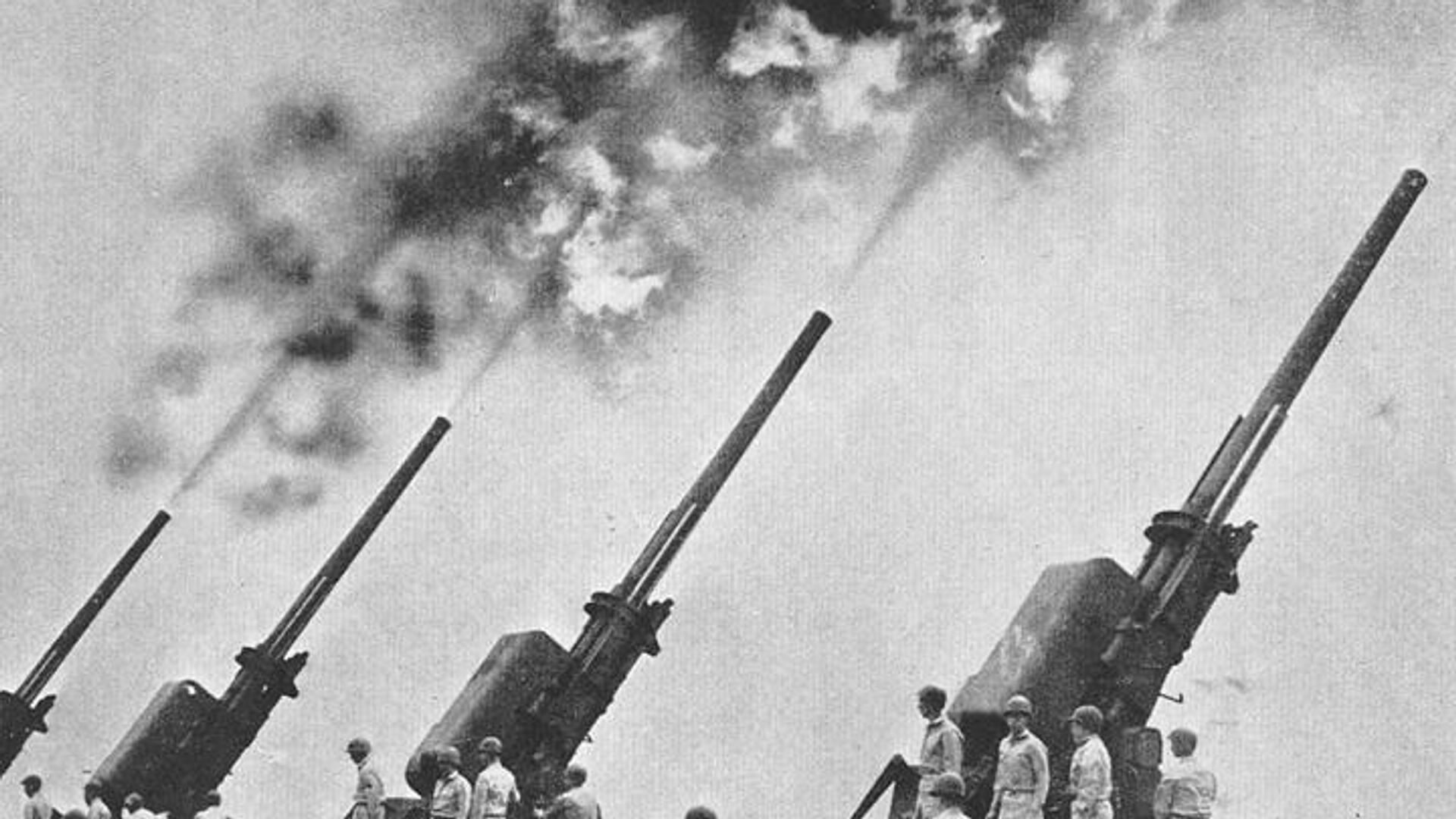‘Dust Defense’: US Academics Pitch ‘21st Century Flak’ to Counter Hypersonic Weapons

© Library of Congress
Subscribe
As the US falls further behind Russia and China in developing hypersonic weapons, it has begun looking for new ways to counter the notoriously evasive projectiles. One idea pitched at a recent Washington think tank involves tainting the air ahead of a hypersonic weapon in the hopes of disrupting its functioning.
Academics at the Washington, DC-based policy think tanks Center for Strategic and International Studies (CSIS) suggested in a Monday seminar that the US could use particles designed to hang in the air as a “dust defense” against hypersonic missiles. They also suggested microwaves and other ways of interfering with the missiles’ functioning, which might make them malfunction and become easier to shoot down.
“At hypersonic velocities, missile impacts against atmospheric dust, rain, and other particles can deposit bullet-like kinetic energies, triggering unpredictable aerodynamic, thermal, and structural disruptions,” they wrote in the report, noting the conclusion was based on incidents previously encountered by high-speed reentry vehicles.
According to academics, hypersonic weapons are actually more suited than other kinds of missiles to being countered by the “dust defense.”
“[T]he defender might dispense engineered particles across a broader airspace early in a hypersonic missile’s trajectory, allowing damage to compound over time,” they wrote. “The principle would be to temporarily saturate the domain in which hypersonic flight can take place. Engineered with a sufficiently wide dispersal pattern, such an effector could operate with simpler guidance and agility requirements than blast-fragmentation weapons.”
“Metallic, pyrotechnic, or other purpose-designed particles could dwell for tens of minutes in the upper atmosphere, relaxing timing requirements for hypersonic engagements,” they hypothesized. “Such effects would be temporary, but much of the concern about hypersonic missile attack relates to a short, highly concentrated, and structured attack. Given the higher speeds earlier in the flight of a hypersonic glider, a ‘wall of dust’ would be more effective earlier rather than later in its flight.”

Multi-purpose fighter MiG-31 with the hypersonic Kinzhal rocket on the military parade devoted to the 73rd anniversary of the victory in the Great Patriotic War of 1941-1945
© Sputnik / Evgeny Biyatov
/ The authors compared the defense to flak, a mid-20th century means of air defense in which specially designed artillery shells were set to explode at certain altitudes, raining enemy aircraft with clouds of shrapnel in an attempt to damage the aircraft or maim their crews. Raging air battles could see the sky thick with flak clouds.
The CSIS academics also suggested that high-powered microwave (HPM) weapons, a type of directed energy that is less vulnerable to weather changes than lasers, could be used to “fry the sky” ahead of an anticipated hypersonic weapon’s path, which would damage the missile’s circuitry, making it malfunction in ways that might cause it to crash or make it easier for more conventional interceptors to bring it down.
The further postulate that many of these weapons could be used in tandem to create a “layered defense,” with the same missile carrying particulate and microwave defenses, as well as a kinetic kill mechanism.
Hypersonic weapons, which fly at lower altitudes than ballistic missiles and much faster speeds than other missiles, are extremely hard to intercept. Not only are they hard to spot and very fast, but they can maneuver unpredictably at the same time.
In fact, that’s why Russia pioneered the weapons: when the US unilaterally pulled out of the Anti-Ballistic Missile (ABM) Treaty in 2002 and began pursuing a bevy of new interceptors, Moscow feared the nuclear strategic balance would shift in Washington’s favor, and the US would become capable of executing a nuclear first strike. The US’ elaborate ballistic missile detection and interception networks are almost useless against hypersonics.
Today, the US still has no deployable hypersonic weapon, although several are in various stages of development. Russia, however, has three hypersonic weapons, two of which are already deployed: the Avangard glide vehicle, fired by a powerful intercontinental ballistic missile rocket, and the Kinzhal cruise missile. The Zircon anti-ship missile is presently in its final stages of testing. China has also developed multiple kinds of hypersonic weapons, and the Democratic People’s Republic of Korea (DPRK) claims to have carried out several hypersonic weapons tests in recent months.
Last week, US Vice Admiral Jon Hill admitted that the US Navy’s RIM-174 missile, also called the Standard Missile-6 (SM-6), is the only weapon in the US arsenal capable of potentially downing a hypersonic weapon. The missile has also been sold to South Korea and Australia. Russia has boasted that its new S-500 air defense system is capable of shooting down hypersonic weapons, as well.

